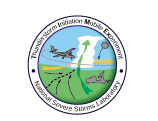
 Wakimoto et al.
Wakimoto et al.
Hypothesis (Wakimoto et al.) on thunderstorm initiation due to local maxima of water vapor along boundary-layer convergence zones |
|
|
R.M. Wakimoto, J.W. Wilson, D.E. Kingsmill, N.A. Crook, C.K. Mueller and T.M. Weckwerth on November 13, 1997 at 19:20:55: The preferred locations for the initiation of deep convection are dependent upon the horizontal distribution and vertical depth of water vapor along convergence zones. It is further hypothesized that local maxima in water vapor and thus greater potential for thunderstorm development occur at the intersections between convergence zones, some of which may include horizontal convective rolls. MOTIVATION Recent simulations using numerical models have highlighted the sensitivity of thunderstorm initiation to changes in the moisture and temperature profiles of the order of 1 g/kg and 1-3 deg C, respectively (e.g., Lee et al. 1991, Mueller et al. 1993, Crook 1996). In addition recent observational studies have shown that variations in water vapor of at least this magnitude are common on the mesoscale and that adequate means for measuring these variations are only now beginning to emerge. Measurements from CLASS soundings provide relatively accurate profiles at point locations, however, results have shown that if horizontal convective rolls are present within the convective boundary layer, temperature and mixing ratio variations on the order of 0.5 K and 1.5-2.5 g/kg can be expected depending on the location of the sounding site relative to the rolls. Furthermore it was shown that the water vapor variations had the greatest effect on the variations in CAPE and CIN (Weckwerth et al. 1996). Stationary convergence lines have been shown to locally increase the magnitude and depth of the water vapor in their immediate vicinity (Wilson et al. 1992). Other mesoscale features could cause similar deviations (e.g., variations in soil moisture). The above suggests that a thunderstorm initiation project that hopes to substantially improve upon the results from previous experiments must include provisions for accurate and detailed measurements of boundary layer horizontal and vertical distributions of water vapor, as well as their temporal variability. REFERENCES Crook, N.A., 1996: Sensitivity of moist convection forced by boundary layer processes to low-level thermodynamic fields. Mon. Wea. Rev., 124, 1767-1785. Lee, B.D., R.D. Farley and M.R. Hjelmfelt, 1991: A numerical case study of convection initiation along colliding convergence boundaries in northeast Colorado. J. Atmos. Sci., 48, 2350-2366. Mueller, C.K., J.W. Wilson and N.A. Crook, 1993: The utility of sounding and mesonet data to nowcast thunderstorm initiation. Wea. and Forecasting, 8, 132-146. Weckwerth, T.M., J.W. Wilson and R.M. Wakimoto, 1996: Thermodynamic variability within the convective boundary layer due to horizontal convective rolls. Mon. Wea. Rev., 124, 769-784. Wilson, J.W., G.B. Foote, N.A. Crook, J.C. Fankhauser, C.G. Wade, J.D. Tuttle, C.K. Mueller and S.K. Krueger, 1992: The role of boundary-layer convergence zones and horizontal rolls in the initiation of thunderstorms: A case study. Mon. Wea. Rev., 120, 1785- 1815. |
|
|
PROPOSED EXPERIMENT We would use WSR-88Ds, DOWs and ELDORA to identify the location(s) of the convergence zone(s). Two vertical pointing, mobile water vapor DIAL systems would be stationed along the zone to measure the profiles of water vapor at different locations along the line. Mobile CLASS soundings would also be launched at various locations along the line, including at the DIAL sites, to examine the along-line variations in CIN and CAPE. A scanning water vapor DIAL system would be located within the DOWs' dual-Doppler lobe and would measure the horizontal water vapor field along the convergence zone. It is also possible that we could use an airborne downward- or sideways-pointing DIAL system to map out the water vapor field along various flight tracks. Additionally the DRI mobile radiometer would be used to drive along the line to make measurements of the vertically integrated water vapor. Mobile mesonet stations would also provide useful information on the surface moisture distribution. Dual-Doppler analyses from the DOWs and/or ELDORA would then be used to map the three-dimensional wind fields and locations of thunderstorm initiation. An instrumented aircraft, such as the King Air, would be required to validate the water vapor remote sensor fields, as well as the along-line vertical velocity field. |
|
|
This hypothesis is refuted if we observe intersections of convergence zones which do not have local maxima in water vapor or if thunderstorm initiation occurs at regions along a convergence zone which do not exhibit moisture maxima. |
|
|
The following appear in order; discussion points may directly refer to one or more comments preceeding it.
Click here to comment on this hypothesis. Please reference: WAKIMOTO. |
|